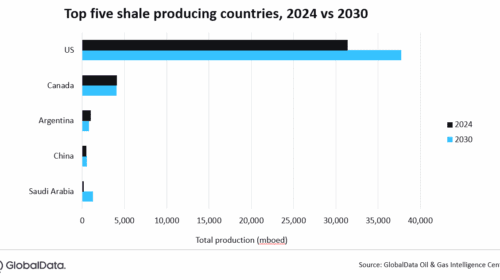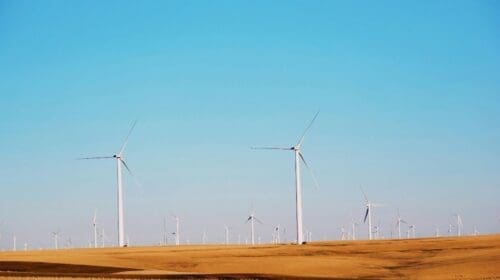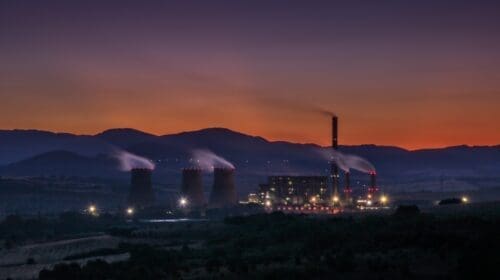The oil and natural gas industry, an age-old fortress of manpower, has seen its ramparts shaken by an empowered female workforce. These women are a vital talent pool. They bring fresh ideas and perspectives and crucially navigate the industry’s challenges. The entry of women and minorities has broadened opportunities, leading to a more diversified labor force that has bolstered the industry’s resilience.
As the industry projects a whopping 26 million job opportunities by 2045, the ascent of women in the oil and gas sector is far from a token gesture. It’s an essential demographic shift that modernizes the industry. This inclusive revolution ensures that the oil and natural gas industry can meet future demands robustly, opening doors for lifelong careers to a diverse talent pool.
Current Status of Female Workforce in the Industry
The tale of women in the oil and gas sector traces back to the post-war period. After World War II, the world saw seismic shifts. Industries were left in need of talented hands and minds. By the 1970s, federal civil rights laws paved the way for more women to work offshore. The oil and gas industry became less of an inaccessible fortress and more of a receptive platform for skilled women.
Fast forward to the 21st century, and women in the oil and gas industry are no longer anomalies. They’re essential pieces of an evolving puzzle. Women are transforming the narrative by climbing the corporate ladder and infusing the industry with sustainability. They are capitalizing on the late 20th-century opportunities and redefining sustainability.
Looking ahead, gender balance in the sector is not just a fringe benefit; it’s the key to a healthier, more innovative, and resilient oil industry.
Challenges Faced by Women in the Oil and Gas Sector
Women’s journey in the oil and gas industry hasn’t been easy, though. After landing an oil and gas job, the first challenge is getting people to acknowledge their credibility. It used to be a daunting challenge, but thanks to the resistance of brave women over the years. This justifies the conventional knowledge that the oil and gas industry was too rough and tumble for women. However, they have shown grit and tenacity and resisted the pushback. Women have made their mark and earned their spots. Today, oil and gas companies are beginning to recognize the value female employees could bring.
After navigating management positions, the next challenge is advancing into senior management. Despite the hurdles, women continue to roll up their sleeves and push on. Generally, women in this line of work usually have to demonstrate extraordinary leadership, vision, and a knack for problem-solving to be recognized. But, reaching a senior management position is one for the books. Therefore, seeing women breaking the glass ceiling to executive positions is inspiring in the oil and natural gas industry.
How Women are Transforming the Narrative in the Oil & Gas Industry
Men have long dominated the oil and natural gas industry. But it’s the 21st century, and women are elbowing their way to the drill bit and boardroom. They are helping bridge the industry’s talent gap and setting new norms. Efforts to empower women in the oil and gas sector are not just feel-good stories for PR puffery; they’re vital business strategies.
Women are standing shoulder-to-shoulder with their male peers, making their mark and transforming the industry. From the rig floor to the boardroom, women in the oil and gas sector are redefining roles and busting stereotypes. The narrative once dominated by men is being rewritten. After all, empowering women and supporting their growth drives the industry forward. This progressive shift is more than a narrative; it’s the fascinating success stories of women leading and shining in oil and gas.
Success Stories of Inspiring Female Leaders in Oil and Gas
Let’s take a look at some truly fascinating individuals. These ladies are real game-changers in the oil and gas industry. How they’ve managed to make their mark there, it’s something we ought to look at. Remember, this is not a walk in the park. We’re talking about the oil and gas industry – one of the toughest professions out there.
1. Christina Sistrunk: A Retired CEO’s Journey in Aera Energy
Let’s start with a cracker of a success story. Christina Sistrunk, a one-time CEO of Aera Energy. Back during her tenure, she had some pretty strong notions about how the capabilities of the oil and gas industry could play a key role in tackling global issues. A visionary, you could call her. Taking the bull by the horns, she made waves in the industry, showing her grit and tenacity.
Her legacy there at Aera Energy is one for the books. She proved that when push comes to shove, women can lead just as effectively and powerfully in the oil and gas industry, maybe even more so.
2. Jerry Tardivo Alcoser: Commanding the San Joaquin Valley Operations in Chevron
Moving forward, let’s put the spotlight on Jerry Tardivo Alcoser – the lady who calls the shots for all operations out in San Joaquin Valley at Chevron. Her philosophy is simple – focus on what can be controlled and how everything can be improved. Straightforward and practical, it’s this mindset that has made her a go-getter in the industry.
Stories like hers aren’t just impressive—they show us how women can be solution-oriented and bring a fresh perspective in handling the problems that come along with such complex operations.
3. Lucy Ferguson: Mechanical Engineer at Shell
Now, here’s an inspiring tale that’s a bit different – Lucy Ferguson. This woman is a mechanical engineer who has had loads of experience in the oil and gas sector. She’s the real deal. She’s worked in everything from commissioning to operations and even construction and decommissioning of upstream and downstream operations in oil and gas.
In her current gig, she looks after a community of about 1600 onshore and offshore people. Her job isn’t just about checking the nuts and bolts but also making the place more acceptable for both men and women to work offshore. Talk about challenging the norms and solving problems.
4. Marije Hoedemaker: General Manager at Shell
Meet Marije Hoedemaker, the General Manager at Shell. Her focus is the energy industry, but she’s not just about keeping the lights on. She’s hell-bent on pushing for sustainable energy, incorporating methods such as carbon capture and storage into their operations.
She didn’t start as a big shot, though. This lady worked her way up, taking on project management roles in refineries, LNG projects, and construction projects in places like Europe, Qatar, Japan, and Canada. With her leadership, she’s making sure the energy sector isn’t just about oil and gas, but also about paving the way for a more sustainable future.
5. Maria Spyraki: Executive Director at International Energy Agency (IEA)/Trailblazer as an MEP
It’s not so easy being a woman in a world run by men, but Maria Spyraki is not your average girl. As the Executive Director at the International Energy Agency and a hotshot in the European Parliament, she’s making waves in the oil and gas industry. Her focus is on reducing methane emissions, and she is not afraid to call out the big companies in the oil and gas sector for their hefty contribution.
This hard-working lady has worked to close the gender gap in an industry that’s largely male-dominated. Spyraki is proof that women can and should have a seat at the decision-making table. She’s a true trailblazer in the industry, showing that women are not just capable but tireless in their fight for a cleaner, more sustainable future.
6. Iman Hill: CEO of the International Association of Oil & Gas Producers (IOGP)
Iman Hill, CEO of the International Association of Oil & Gas Producers, is another bigwig calling the shots in an industry heavily populated by fellas. This woman isn’t taking the back seat. Hill knows the value of having women join the ranks in the petroleum engineering field and puts up a fight for them.
She’s working to encourage women and minorities to consider the male-dominated industry for their lifelong careers. With Hill at the helm, this isn’t just some pipe dream; it’s becoming a reality. By breaking down barriers and offering opportunities, she’s lighting a path for future women in the industry.
7. Guloren Turan: General Manager (Advocacy) at Global CCS Institute
Guloren Turan isn’t just leading the charge; she’s changing the game. As General Manager at Global CCS Institute, she’s about balancing gender diversity in the energy industry. Plus, she’s big on carbon capture and a sustainable energy future. Not too shabby for a lady, huh?
Fighting for the future, she’s helping tear down the walls that often sideline women in the industry. Turan plays a vital role in inspiring female role models and promoting gender diversity, advocating for change in the energy industry towards a cleaner, lower-carbon future. Best believe, when this lady speaks, folks pay attention.
The Growing Number of Jobs in the Oil and Gas Industry
Look, the oil and gas industry is not a small fry. According to the U.S. Department of Energy, this powerhouse of an industry added back over half a million jobs in the 2020s second half alone. That’s a big deal, folks. This industry keeps the bread and butter on the tables of 6.8 million Americans, which is a sizable 7% of all new jobs nationwide.
And if you think that’s impressive, hold onto your hats. Jobs in this industry are expected to increase from 18 million in 2021 to a whopping 26 million by 2050. That’s a whole lot of opportunities. With such a dramatic increase, it has the potential to bring in a whole new crop of youngsters, women, and minorities. Talk about leveling the playing field!
How Gender Diversity Can Help the Oil and Gas Industry
● Talent Gap Bridge
Now, here’s some food for thought – women are half of our talent pool. That’s right, half! Think about it. This isn’t just about justice or equality – no, sir, it’s smart business! The industry has openings and plenty of women with degrees in fields like mechanical engineering who can fill them. It’s like trying to build a car with only half the parts. It just does not make sense. Forget about the old “dirty” industry narrative. It’s time to bang that drum, recruit those talented ladies, and bridge that talent gap!
● Better Adaptability to Change
The energy sector is changing faster than greased lightning! With folks inventing new tech and markets shifting quicker than you can say, “drill, baby, drill,” adaptability is key. Now, this isn’t to say men are not adaptable or women are better at it, but there’s plenty of research showing gender-diverse teams navigate change smoother than a seasoned captain sailing calm waters. So adding more women to the roster? It’s like getting your ride a turbo boost! Let us weather the twists and turns of this fast-paced game, staying ahead of the pack. That’s a competitive advantage right there!
● Corporate Social Responsibility (CSR)
Now, CSR is not just a fancy acronym; it’s about doing right by women. And guess what? Gender diversity makes a darn good fit with CSR. It shows we are committed to fairness, inclusivity, and social responsibility. It’s not just right; it’s good for business. People respect companies that respect their workforce. A company that is big on building a gender-diverse team shows the world how much they value everyone, regardless of their sex. This helps build a solid reputation in the industry.
● Improved Innovation and Decision Making
Have you ever noticed how different folks see things differently? Different eyes see different things, different minds come up with different ideas. That’s why gender diversity is so important – it brings a rainbow of perspectives to the table. It helps us dream up fresh solutions, improve processes, and shake things up. Just like a good gumbo with all the trimmings, the mix of men and women adds spice and flavor to decision-making. This highlights the issues and considerations that might have been missed otherwise. That’s how to reach rock-solid decisions and innovate like champs.
● Profit Growth
Now, here’s a tidbit that might tickle your feathers – businesses that have gender equality show higher sales and profits. Yes, you heard that right. Go ahead and check this Harvard study for the facts. They have crunched the numbers, and it’s staring us right in the face – women in the workplace aren’t just about equality, it’s smart business!
Just think about it; it’s not some fancy math equation. We all know women have a knack for seeing things from a different viewpoint, right? They bring unique ideas and innovative solutions to the table. And that is a recipe for profit growth. So, it’s high time for the bigwigs in the oil and gas industry to step up their game and foster a culture that encourages women to make their mark.
The Role of Organizations in Championing Diversity and Inclusion Programs in Oil & Gas
It’s not just about preparing a fancy equality charter or hanging a ‘we support diversity’ poster on the office wall. No, companies have a responsibility to roll up their sleeves and make some real changes. The oil and gas industry particularly needs to put the pedal to the metal when it comes to recruiting and retaining women workforce.
To give you a picture, it’s about creating opportunities for women in leadership positions, formulating policies that support work-life balance, and fostering a safe and inclusive work environment. It’s a hefty task but one that leads to a road worth traveling for both the companies and the women who are part of them.
Actionable Strategies for Oil & Gas Companies
So what can these companies actually do to up their game? Here’s a list of some actionable strategies:
- Initiate and support diversity hiring programs.
- Create mentoring and leadership programs for women.
- Implement policies that advocate work-life balance.
- Provide training for employees to overcome gender bias.
- Highlight and celebrate women’s achievements in the industry.
- Encourage women’s participation in decision-making processes.
- Establish a system to handle and address gender-related grievances.
- Invest in community initiatives that support women in the oil and gas industry.
The Value Community Groups Such as WOGA for Women Empowerment
Now, here’s a group worth talking about – The Women’s Oil & Gas Association, or WOGA for short. These folks are not just sipping tea at their meet-ups. They’re pulling up their bootstraps and doing a ton of work to empower women in the oil and gas industry. From professional development programs to networking events, they’re paving the way for more women to join the industry. So, hats off to them!
Steering the Future of Energy: Women Leading the Sustainability Drive
Now, moving on to a broader picture, women are not just playing their part in the current industry trends; they’re also leading the charge toward a sustainable future. From renewable energy sources to establishing eco-friendly procedures, there are women who are in the driver’s seat when it comes to steering the future of energy.
It’s no secret that the industry is a behemoth when it comes to energy consumption and emissions. But with women in leadership roles, companies are becoming more conscious of their footprint and taking initiatives to reduce it. So it’s not just about profit and growth; it’s about shouldering the responsibility of our planet. As a matter of fact, there isn’t anyone better suited to nurture and care for our home than the women of this industry.
Evaluating Policies Favoring Gender Balance and Sustainability in the Sector
The oil and gas industry, as muscular as it is, needs a touch of femininity to balance the scales. Policies favoring gender balance and sustainability have been making rounds in the conference rooms of oil companies. A closer look reveals that these policies are more than just corporate rhetoric; they’re the blueprints for a more balanced, sustainable future.
On gender balance, these policies are far from the “ladies first!” kind of ordeal; instead, they cautiously strive for fairness. They encourage recruiting and promoting more women into top roles, ensuring diversity in decision-making. The aim is to dispel the prevailing myth of the oil and gas industry being a “man’s world.” On sustainability, these policies eye a two-pronged strategy: decrease environmental harm and increase efficiency. They promote green practices like reducing emissions, reusing resources, and harnessing renewable energies. All while driving more efficiency and cost savings. But, you know what they say; the proof of the pudding lies in the eating. How these policies are implemented remains their true test.
Conclusion: The Future Trends of Women’s Presence in the Oil & Gas Industry
The oil and gas industry is one heck of a tough nut to crack, particularly for the women folk. But with the current trends, we’re reminded that there’s no mountain high enough. Let’s face it: women leaders are making a stalwart impact, and the future for women in this industry workforce is brighter than a new dime. Ladies are not just present; they are actively altering the narrative in the industry.
The exploration and production sectors are witnessing an impressive rise in the number of women in the workplace, with some brave single women leading major operations. But it’s not always gumdrops and lollipops; the industry is notoriously known to be male-dominated and poses unique challenges to advancement opportunities. Nevertheless, the number of women in leading positions is expected to rise with time. Female leaders drive changes, break barriers, and pave the way for the younger generation. In conclusion, the future for women in the oil and gas industry looks promising, and it seems clear they won’t be leaving any time soon.











